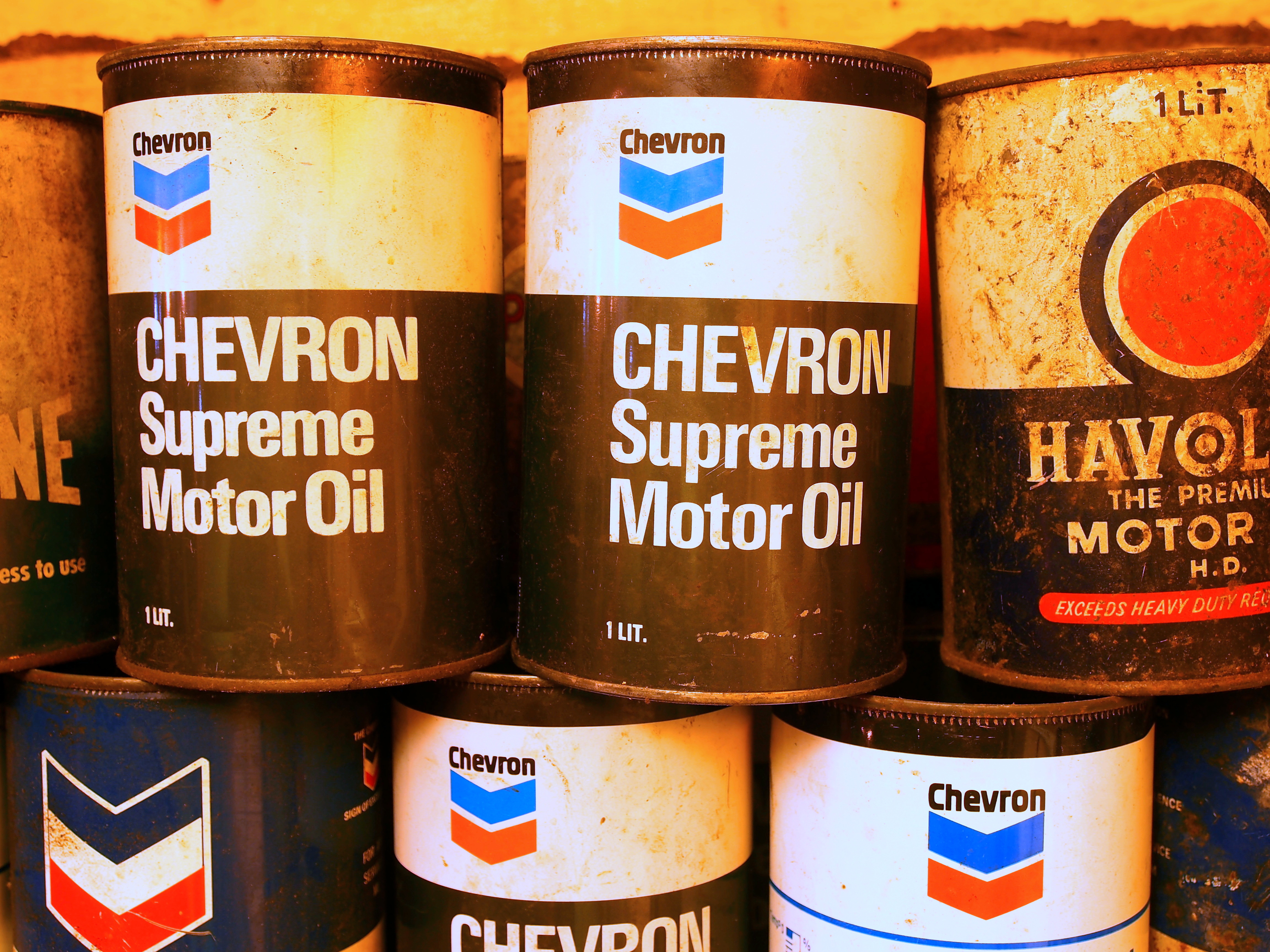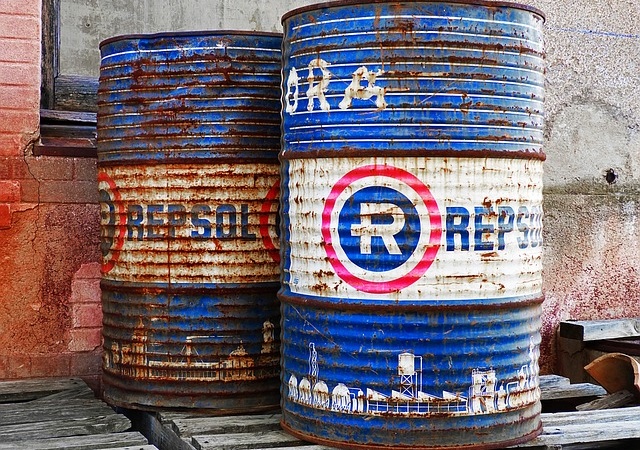What is the Shelf Life of Oil? Ins and Outs of Oil Storage
By on Nov 18 2020

If you frequently purchase oil drums for your business or quarts to maintain an engine, you may often ask-- how long is oil good for? How do I know the shelf life?
ExxonMobil states, "In general, the recommended shelf life for oils and greases is typically five years when stored properly in the original sealed containers."
Oil does not have an exact shelf life.
Drums of oil do not contain anything that goes bad in the way food does. However, oil can be degraded due to contaminants and/or additive dropout because of mishandling.
You will not find a use by date stamped on the top of most oil drums or containers (unless you're working with certain types of oil, like food oil).
So, how do you know?
Oil's longevity depends on how well you handle and store the product.
For example, if you leave a drum of oil sitting outside in sweltering 95-degree heat and then it falls victim to a summer thunderstorm, you'll have issues. Water will build up on the lid of the drum and be pulled into the drum itself even on drums that have never been opened.
Common signs of deterioration include a cloudy appearance or a noticeable sediment buildup.
However, if you store the drum properly then you can make it last for as long as you need to. Chances of contamination will decrease while cost-effectiveness and safety will increase.
A key rule to lubrication storage that can extend an oil's shelf-life is FIFO: First-in, first out.
The strategy secures oil is not wasted by keeping older products in the front of the storage area.
Shop Industrial, Manufacturing, Automotive Lubricants: Petroleum Service Company
Indoor Storage
Clean and dry environments are best for indoor drum storage. The drums should be in a temperature-controlled environment. A cooler temperature is ideal to prevent moisture absorption from warm air. As is the case with any chemical, the drums should not be stored near any sort of heat source.
Storing drums horizontally is an efficient method because it helps prevent moisture from getting inside of the drum. The floor should also be level and oil resistant to make the oil stay in an ideal condition.
It is necessary to position the drums allowing labels and instructions to be clearly visible. High levels of organization will guarantee the correct product is found, and not misused in any way.
Dispensing equipment should be kept in an accessible location and kept clean and dry. If the drums are stored in an area where several people come in and out of the space, install No Smoking signs for additional safety.
Outdoor Storage

Space restrictions sometimes cause plant managers to store oil drums outdoors; this practice can negatively impact oil performance and lower the product's shelf life.
If you must store oil drums outside, remember to consider the potential for water ingression and be mindful of conditions drums are exposed to.
Upright placed oil drums can be problematic. When it rains, water gets trapped on top of the barrel and eventually submerges the bungs. Sunlight then heats the drum and when it cools, the drum "breathes."
An air exchange between the headspace on top of the oil and the atmosphere occurs. Consequently, water is pulled into the drum through suction.
The water then moves to the bottom of the drum and settles resulting in an increased total amount of liquid in the drum. As the process repeats, the barrel becomes deformed and pushes oil out of the bungs on top.
How to Prevent Water Ingression
Moisture is especially troublesome in the summer because high temperatures bring air with more moisture.
To prevent moisture from getting inside of oil drums that must be stored outside and upright, they should be placed on blocks or racks several inches off the ground. Raised drums will prevent moisture absorption from the ground. If the entire drum cannot be raised, one edge should be elevated to prevent liquid run-off from pooling on top or in the container. The drums should also be covered by tarps or shower caps for the top of the drum. The caps will effectively protect the top of the drum.
However, the best and safest alternative is to store oil drums horizontally. This type of storage is effective because moisture and liquid cannot build-up at all.
Remember never store open or used containers outside, and follow a FIFO routine strictly.
Storing Motor Oil

Storing motor oil also requires attention to detail, but brings different challenges than storing oil drums because they have a higher concentration of additives.
It is best to follow manufacturer's instructions to store motor oil properly, and this can prolong shelf life up to five years.
Manufacturers recommend storing motor oil between 40 degrees and 80 degrees Fahrenheit. Extreme temperature changes impact oil viscosity, despite the presence of oil additives.
If possible, keep the container of motor oil sealed and unopened until it is ready for use.
Storing motor oil in a cool, dry environment is crucial to prevent moisture from entering the bottle. Temperature changes can cause additive dropout. Additives fall out of suspension causing an uneven lubricant mixture that can lead to engine failure.
Tips and Advice
There are a few other factors to keep in mind when storing motor oil.
Pay attention to oil content. If the oil contains rust inhibitors or a high additive make-up, the shelf life will be significantly lower than oil without them; you may want to prioritize use.
Also, used containers interact with air temperature differently because of vacant space in them. Similar to an oil drum, air is pulled into the containers in low temperatures and pushed back out in high temperatures. Water can condense in the bottle and then transfer into the engine causing problems.
It is not unusual for additives to separate in oil. If this happens with a quart sized container of motor oil, it can easily be fixed by shaking the container allowing the content to mix back together.
Be sure to use the entire container to maintain a balanced mixture of oil and additive in the engine.
Disposing Used Motor Oil
Used motor oil contains several contaminants; it is important to store and dispose of the material properly.
Store used oil in clear, clean containers and attach labels. Be sure the container was not previously used for any other chemicals to prevent toxic reactions. Ensure that it does not mix with paint, solvents, or anti-freeze.
Take used oil to a designated collection site to recycle. Visit Earth 911 and enter motor oil into the search bar, along with your zip code. Most automotive retailers accept used motor oil. Or, you can contact 1-800-CLEANUP for more information.
If you're still uncertain about whether oil can be used or not, you can always take a sample and send it to a facility for testing.
Now that you know all about oil storage, shop Petroleum Service Company for your favorite oil products!
Sources:
https://www.exxonmobil.com/en/aviation/knowledge-l...
https://www.mobil.com/en/industrial/lubricant-expe...







